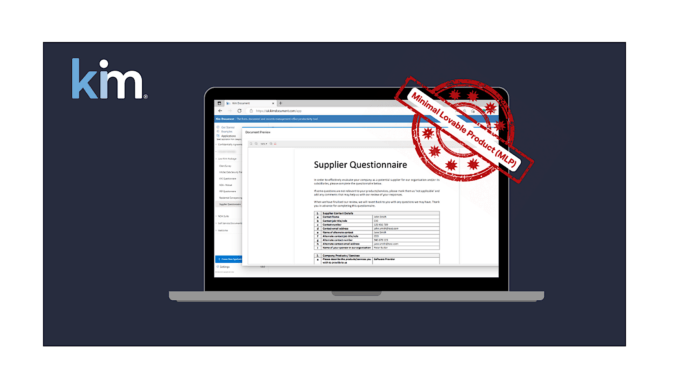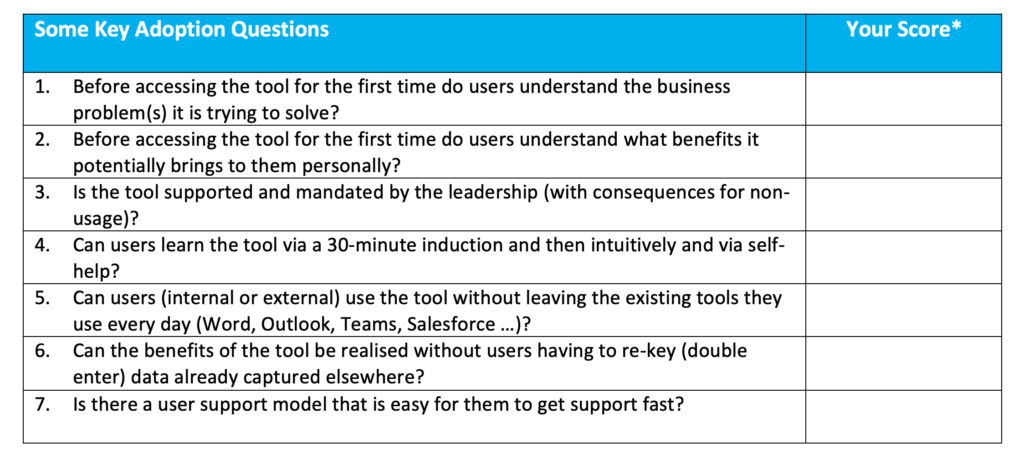
By Karl Chapman, CEO, Kim Technologies.
In a recent demo of Kim Document, an attendee said, “this is more than an MVP, and it’s an MLP.”
In the tech world, MVP stands for “Minimum Viable Product.” A version of a product that has just enough features to be usable by early adopters, who can then provide feedback for future product development. It does the job, solves a problem(s) and will be enhanced.
MLP means “Minimum Lovable Product.” An offering that users love from the start. It represents the minimum required for customers to get excited about a product rather than merely tolerate it.
At first, MLP sounded flaky because it can be susceptible to personal preferences, but it got us thinking. On reflection, it also made us thankful that the attendee combined MVP with MLP when seeing Kim Document for the first time.
Will it be used?
There are clear “table stakes” required even to be considered as a potential technology that prospects will buy (i.e., InfoSec, hosting, scalability, compliance, and others). There are also questions regarding cost/value, ease of deployment, plus clarity that it solves the business problem(s). Once these bridges have been crossed, the focus when selecting a new tool should be placed on likely adoption. Forget how shiny and exciting the software may be. Forget what AI capabilities it has or claims to have. Forget how clever some of the functionality appears. The critical question is, “Will it be used?”
There is little point in deploying another tool (particularly one that means users have to learn another interface) if it has a low chance of adoption. Unfortunately, from our experience, most law firms, corporate legal departments, compliance teams and other business functions have one or more tools that they are still licensing, that only a few people use, with little to no return on investment. As one organization commented, “We are trapped in a license model that we can’t break for two years.”
What drives/helps user adoption?
Assuming that a technology passes the table stakes and addresses the use case(s), what helps to drive adoption? This is where MLP can start to play a crucial role.
Users have a short attention span. Change is always a challenge; if a user cannot get to grips with a new tool quickly, this can deter them. Even if they understand the potential business/personal benefits, and the deployment of the product has strong leadership support, users will still only tolerate it for a short period if it’s either hard to use and/or it does not deliver the perceived benefits. The tool may not need to be ‘lovable’, but it certainly needs to be intuitive and easy to use.
At Kim, we have an “Adoption Table,” an extract of which we have shared below. We use it to help potential buyers of technology think about adoption.
Adoption Table: Extract
In completing the below please score your response as 1 = No, 2 = Some May, 3 = Most Will, 4 = Yes. Some answers will be a binary Yes or No.

*The maximum unweighted score in the extract above is 28. As a rule of thumb, any score below 20 should alert you to think about what else needs to be done to land the tool successfully or for you to conclude that sadly the tool, while functionally satisfying your requirements, is just not going to be adopted.
Meet users where they are
The Kim UE/UI team has consistently approached MLP by implementing a “Meet users where they are” strategy. Yes, Kim has developed rich functionality and has a friendly user interface, but one of the key features of Kim is that you can use it without leaving MS Teams, Word or Outlook.
Additionally, through our extensive REST APIs, we facilitate the avoidance of rekeying data and the easy submission of support requests and self-service, as there is no need to leave your other tools (e.g., Salesforce, SuccessFactors, etc.).
This is one of the reasons why we are seeing such a significant take-up of Kim Document – a product designed to help organizations get started quickly. You can be live today with no implementation fee. You can use it without leaving MS Teams or from any browser and it is no-code.
It is more than an MVP. It is also an MLP!
With Kim, seeing really is believing. Book a demo and discover why people claim it’s an MLP.
–
[ Artificial Lawyer is proud to bring you this sponsored thought leadership article by Kim Document. ]